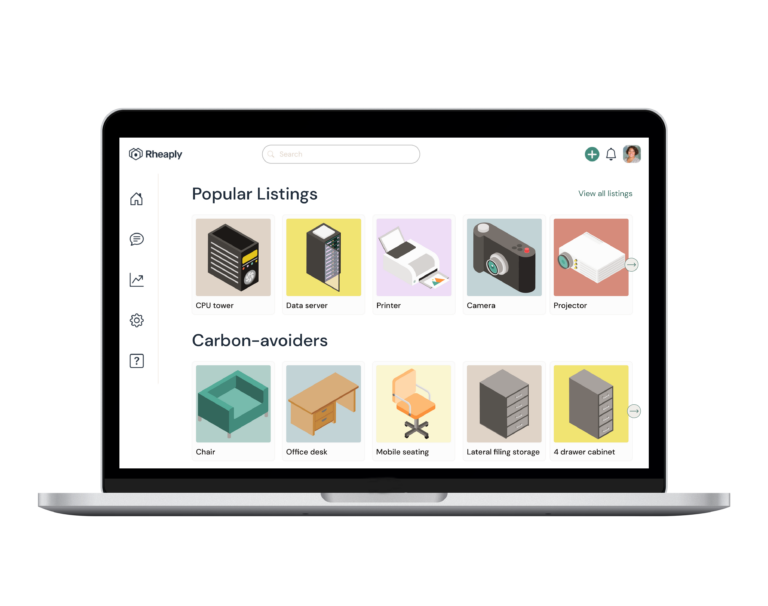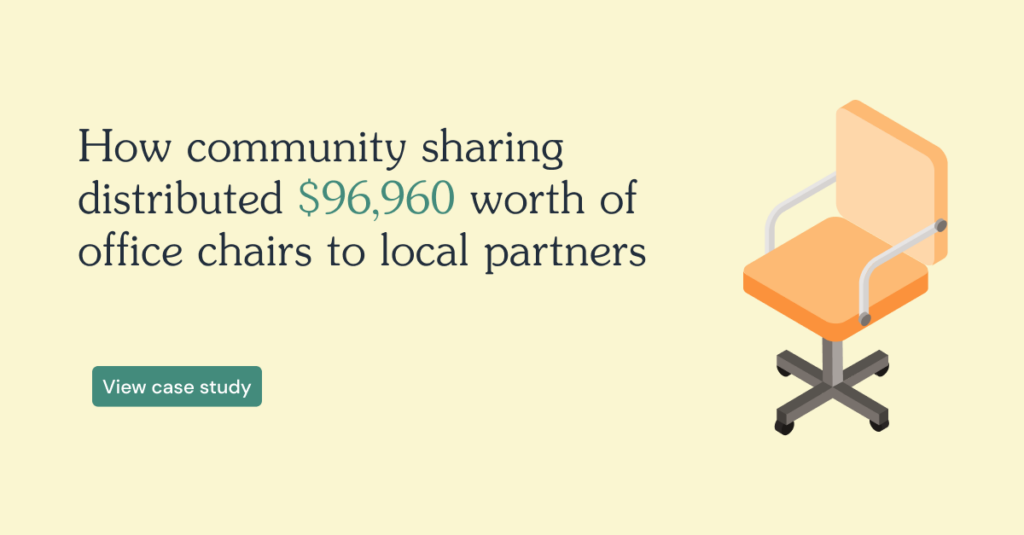Procurement Procedures
Rheaply puts reuse on the table for every organization.
Procurement procedures
Procurement is the process of obtaining goods, services, and resources from outside sources. The procurement process involves a series of steps that organizations must follow in order to ensure that the best possible products and services are obtained at the most competitive prices.
Each organization’s procurement process might look a little different according to the organization’s specific needs, but most procurement processes utilize many of the same best practices. Common procurement steps involve identifying needs, researching potential suppliers, negotiating contracts, and processing payments.
- Identifying Need: This is the first step in the procurement process, and it involves determining what goods or services are needed, as well as when and how they will be used.
- Researching Potential Suppliers: After identifying a need, organizations must research potential suppliers to find one that meets their needs and budget. This includes researching prices, quality of service, delivery times, and other factors that may influence the decision to purchase from a particular supplier.
- Negotiating Contracts: Once an organization has identified a potential supplier, they must negotiate contracts with them to ensure that all parties understand the terms of the agreement before any money changes hands. This may include discussing payment terms, delivery dates, and warranties for products or services purchased.
- Processing Payment: Once negotiations have been completed and an agreement has been reached between both parties, payment must be processed to complete the procurement process.
The procurement process also requires adherence to established procurement procedures and policies in order to ensure compliance with all applicable laws and regulations.
Typical procurement process best practices involve establishing a standard operating procedure for procurement departments that outlines all necessary steps for the successful completion of each transaction. This may include detailed instructions on how to complete important tasks like identifying needs, evaluating potential suppliers, negotiating contracts, processing payments, and managing disputes. It’s also good practice to keep procurement procedures sample forms such as purchase orders or requisitions that can help improve consistency and efficiency when placing orders with vendors or requesting quotes from them.
In addition to following established procurement procedures, it is important to develop strategies for managing risk associated with purchasing activities. This includes evaluating supplier performance on an ongoing basis in order to identify any potential issues before they become serious problems. It also involves ensuring that all relevant stakeholders are
Types of procurement policy
A procurement policy is the set of rules and regulations that governs how an organization purchases goods and services. There are several different types of procurement policies, including sustainable procurement and green procurement.
Sustainable procurement
A sustainable procurement policy ensures that an organization’s purchases are environmentally responsible, socially equitable, and economically viable. A sustainable purchasing policy focuses on selecting suppliers who strive to minimize environmental impact, conserve resources, and promote social responsibility. The benefits of sustainable procurement include cost savings through reduced waste, increased efficiency in operations, improved brand reputation, and better compliance with regulations.
Organizations can incorporate a circular economy approach into sustainable procurement policies. This means that instead of buying new products, organizations should prioritize repairing or reusing existing items whenever possible in order to reduce waste and conserve resources.
Green procurement
A green procurement policy focuses on reducing environmental impacts associated with product manufacturing processes and encourages organizations to select suppliers who use renewable resources whenever possible in order to promote sustainability within their supply chain operations. A green purchasing policy can help organizations save money by reducing their overall energy consumption and waste output while also improving their reputation as an environmentally conscious business partner among customers and stakeholders alike.

Procurement process
An effective procurement process entails a series of steps that ensure the process is completed according to procurement best practices. The four broad stages we mentioned previously can be further broken down into seven specific actions that need to be taken in order to complete an efficient and comprehensive procurement process. Here are the 7 steps of the procurement process:
Step 1: Identify Your Organization’s Needs
The first step in the procurement process is to identify your organization’s needs. This includes assessing what goods or services are required, estimating how much they will cost, and determining when they need to be delivered.
Step 2: Evaluate Potential Suppliers
Once you have identified your organization’s needs, you can begin evaluating potential suppliers who can provide them. You should consider factors such as price, quality, delivery time, customer service, and payment terms when making this decision.
Step 3: Choose a Supplier and Negotiate a Contract
After evaluating potential suppliers, you should select one that meets your requirements and negotiate an agreement with them. This agreement should include details such as pricing structure, payment terms, and delivery dates so that both parties understand their obligations clearly before proceeding further with the transaction.
Step 4: Create a Purchase Order
Once you have agreed on all aspects of the contract with your chosen supplier, you should create a purchase order. A purchase order is essentially an official document that outlines all relevant information regarding the transaction, such as quantity and price. It serves as proof that both parties have agreed to proceed with the deal and provides legal protection for both sides if any disputes arise later on down the line.
Step 5: Receive an Invoice and Process Payment
The supplier will typically send out an invoice requesting payment for their services or products. It is important to check this invoice carefully against what was specified in your purchase order before processing payment. Any discrepancies should be addressed promptly with your supplier.
Step 6: Receive and Audit the Order
Once you have received the goods or services from the supplier, it is essential to audit them against what was specified in your purchase order. Any inconsistencies should be addressed with suppliers immediately to prevent poor relations.
Step 7: Record the Transaction
Once all previous procurement process steps in the procurement process cycle have been completed successfully, it’s important to record all relevant information regarding the transaction. This includes keeping a record of the purchase order, invoice, delivery confirmation, and any other relevant documentation. Maintaining a historical record of this information is important for ensuring regulatory compliance and for your organization’s own internal auditing needs.
Following this 7-step procurement process is one of the best ways to ensure a successful procurement process flow, whether your organization is dealing directly with vendors or using a process of e-procurement with the help of a software system. By understanding each step involved in this process, organizations can ensure they get the best value for their money while also minimizing risk.
Procurement methods
Not every process of procurement management is identical. One organization might use a 5 step procurement process, whereas another organization might feel it’s best to have 10 steps in the procurement cycle. Likewise, different organizations use different procurement methods depending on their specific needs. Here are a few examples of the most common procurement methods:
Direct Procurement
Direct procurement is the process by which an organization purchases goods or services that impact the organization’s end product or service directly. For example, an organization would use a direct procurement process to source the physical materials necessary to build a product.
Indirect Procurement
Indirect procurement involves purchasing goods that are necessary to help the business operate, but do not contribute directly to the organization’s product or service. For example, an organization would use an indirect procurement process to obtain office supplies like paper or printer ink. These kinds of supplies are essential for keeping the business running, but may not necessarily be a material that’s included as a part of the company’s final product.
Services Procurement
Services procurement involves purchasing professional services such as IT support, legal advice, accounting assistance, and others from external providers rather than relying on internal staff members for these tasks. Services procurement could also involve purchasing subscriptions to software solutions. A services procurement policy helps organizations save time and money by outsourcing activities that require specialized skill sets without having to hire additional personnel for those roles.
Sustainable supply chain purchasing
Sustainable purchasing is a procurement strategy that seeks to minimize environmental and social impacts of the goods and services an organization acquires. It is also known as green purchasing in supply chain management or sustainable supply chain purchasing.
Green purchasing in procurement management involves considering the entire lifecycle of a product or service from sourcing, to production, to consumption and disposal when making decisions about what to buy. The key principles of sustainable purchasing are:
- Minimizing environmental impact
- Reducing energy consumption
- Using renewable resources
- Promoting fair labor practices
- Supporting local businesses
- Choosing suppliers with strong sustainability credentials
The objectives of sustainable purchasing include reducing costs, increasing efficiency and quality, creating positive social impacts on local communities, supporting ethical business practices, reducing waste generation and pollution levels, and conserving natural resources for future generations. By implementing sustainable procurement principles into their supply chain strategies, organizations can have a significant positive impact on their environment as well as society at large.


